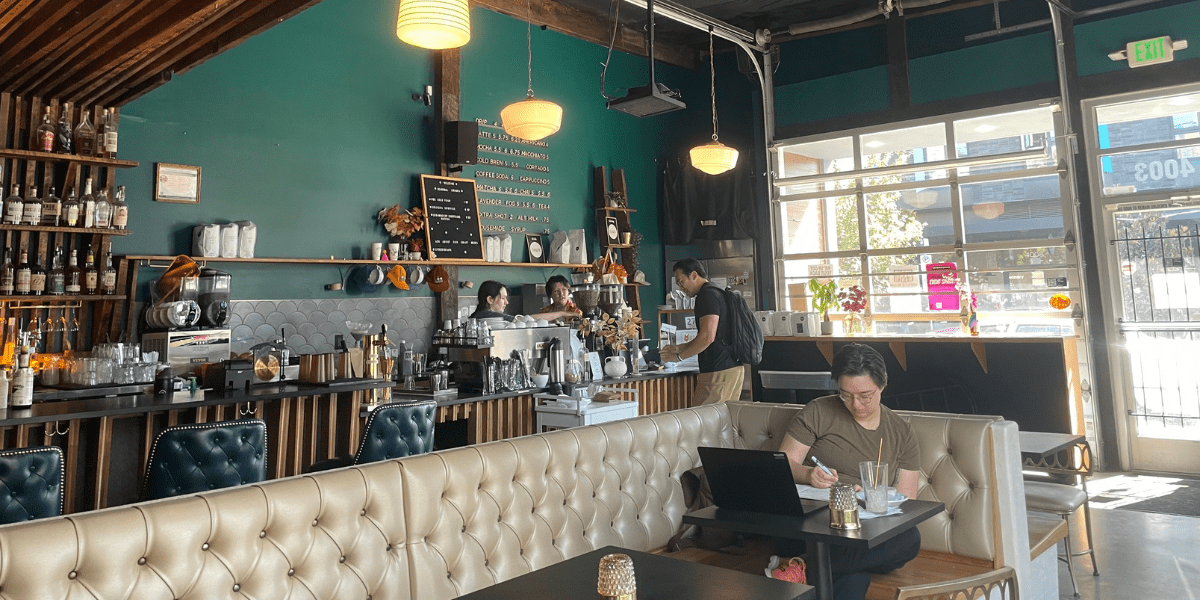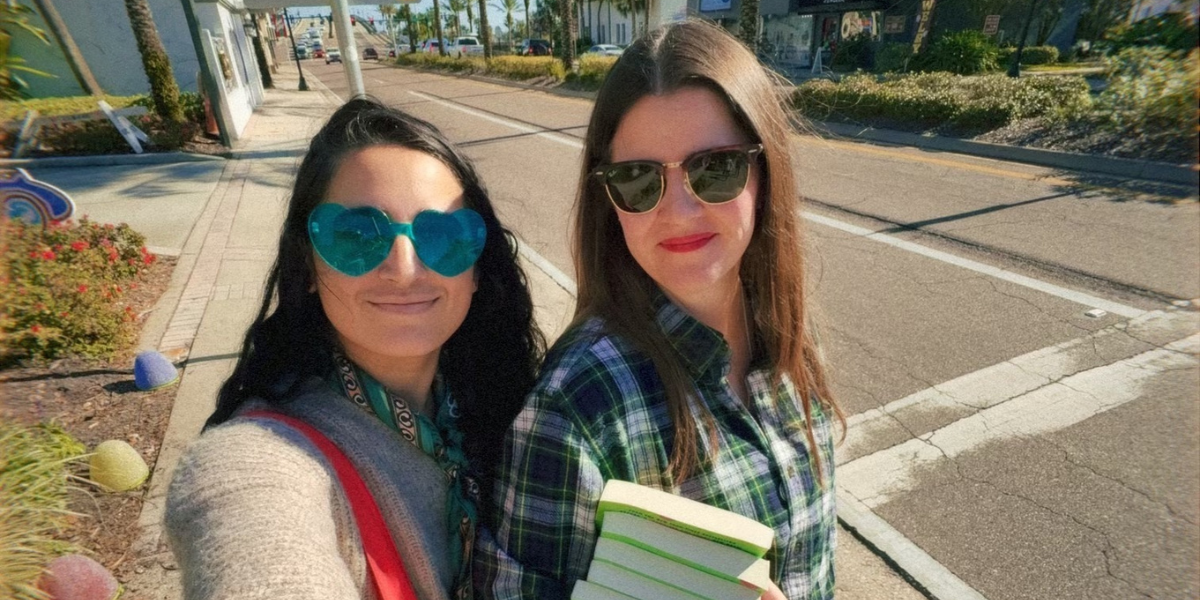
São Paulo is the kind of city that locals love to hate; like any metropolis in the world, you’ll want to scream during rush hour, complain about the crowds (the population is a little over 11 million), whine about the parking prices and cost of living. However, once you take a deep breath and remind yourself you’re in the eigth largest city in the world, you’ll certainly find its silver lining. You’ll grow to love the glow of the city when it’s sunny outside and also its poetic gloom on rainy days; you’ll learn that the outdoor tables, no matter how gritty, are the most privileged spots at bars and restaurants; you’ll be surprised with how culturally diverse this city is; and you’ll become addicted to the unstoppable activities day and night. I might be biased, considering I’ve lived here all my life, but I think you’ll agree with me after visiting my humble recommendations below. You’ll notice that the titles are in Portuguese, so you’ll be vaguely familiar with our language when you get here
So now the question is: why place São Paulo in the Queer Girl City Guide? I could go on forever, but here are a few reasons:
+ We’ve been voted the city with the biggest Pride by the Guinness Book of World Records in 2006, so you’ll have no problem finding the queer crowd during your stay.
+ Same-sex marriage became legal in Sao Paulo in December, 2012 (so you might want to pack a u-haul instead of your ol’ carry-on baggage).
+ Every queer girl will find something to do in this city; clubs, bars, bookstores, cafes, parks, protests… you name it! We have all that and more – and probably 24/7.
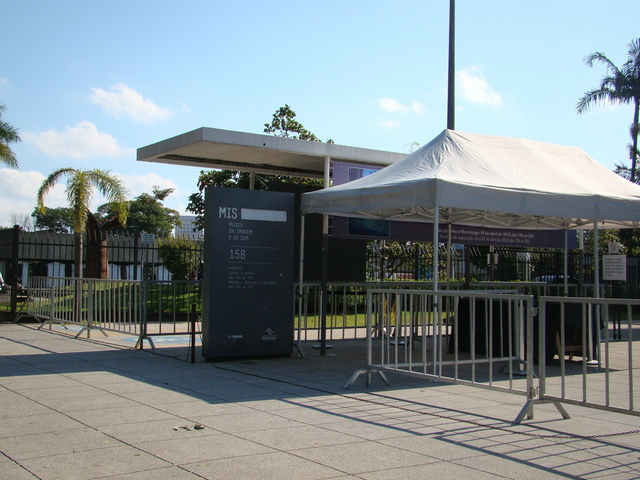
Photo by M.O.S.
Bairros: Neighborhoods
One thing you must keep in mind at all times is that Brazilians are typically informal people, so we sometimes refer to neighborhoods not by their official name, but by adjacent avenues or nearby subway stations. These are the “bairros” you can’t miss.
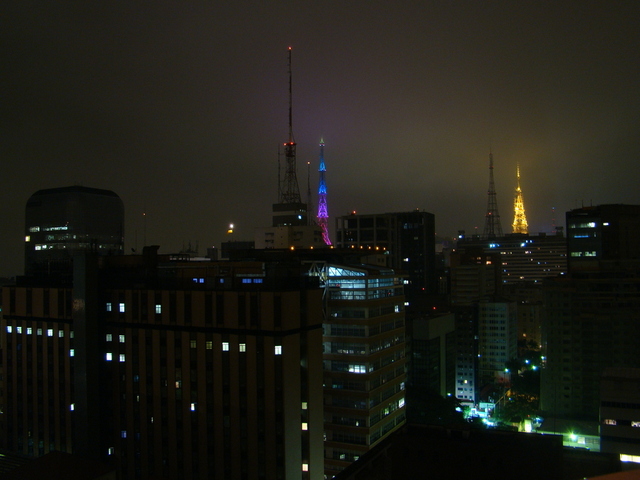
Photo by M.O.S.
Avenida Paulista – although it is technically not the central point of the city, this is where it all happens. Protests, New Year and Carnaval Parades, Pride (!) – everything. It’s mostly packed with business towers and small shopping centers, but you’ll also find a park, theaters, museums and historical houses. Paulista is the most gay-friendly region in São Paulo, so it’s worth breaking it down into different sections:
1) Rua Augusta – former home to beat-down brothels, Rua Augusta maintains its decadent glamour even after all the investments that transformed it into “the street that never sleeps.” You can go there any night of the week and still find it pulsing with queers, hipsters, rockers and an alternative crowd. Note that Rua Augusta cuts through Avenida Paulista and this is the downtown side we’re talking about; the other side still does have a few bars and clubs, but take it from me – it’s not the cool side to be at.
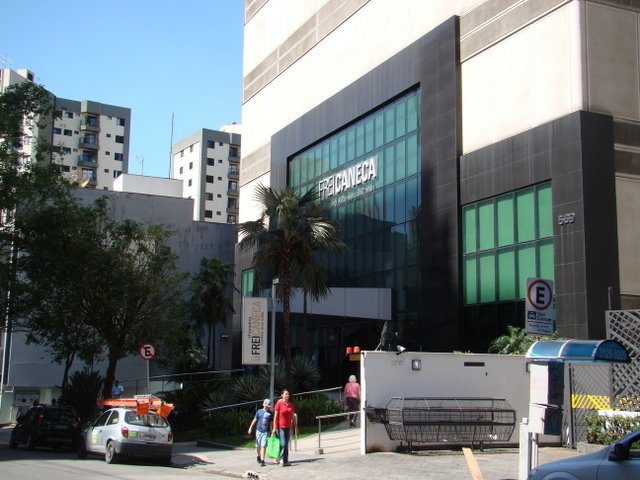
Photo by M.O.S.
2) Rua Frei Caneca – nicknamed “Rua Gay Caneca” (“Frei” and “gay” rhyme in Portuguese), this street runs parallel to Augusta, but is no longer as trendy as it used to be. The best spot is where it crosses Rua Peixoto Gomide; this corner is packed with dingy bars (if you’re more into cheap beer than into clean tables) and two very queer clubs: A Loca and Bofetada. It’s home to the gayest shopping mall in the city, also called Frei Caneca.
3) Jardins – If you choose to go to the slightly-less-cool (in terms of queer nightlife) side of Rua Augusta, you’ll find yourself in Jardins. This neighbourhood is a mixture of upscale residential buildings, fancy (and pricy) cafés and effortlessly chic restaurants. It’s the perfect place to take someone on a date if you want to make a good impression.
Centro/Anhangabaú/Sé/Santa Cecília – the actual central area of São Paulo is as rich in historical sites as it is neglected by the government and police. If possible, always be accompanied by a local, schedule your visits on weekends (more tourists) and never go after dark. The highlights are Teatro Municipal (Municipal Theater) which is currently housing the Municipal Symphonic Orchestra and City Ballet, Catedral da Sé (Metropolitan Cathedral) which is worth checking out for its impressive neo-gothic style and Estação da Luz (Luz Station) which was built by the British in the 1900’s and is located right beside one of the most beautiful parks in São Paulo.
Zona Leste (East Zone) – This section is often referred to as Zona Lost (Lost Zone). If you’re not a local (or accompanied by one) don’t go there. There are parts of it that are great residential neighborhoods (Tatuape and Analia Franco), but in general this zone is best avoided. A large part of the Red Subway Line runs through Zona Leste and this is why people often prefer taking the other lines.
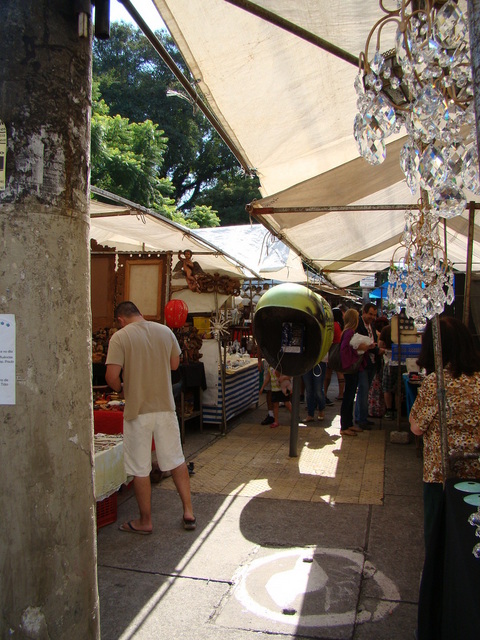
Photo by M.O.S.
Vila Madalena – Vila Madalena’s steep streets used to be associated with intellectual types enjoying high-brow conversations around bar tables. Now it hosts a variety of poignantly different crowds, so if you’re looking for the rainbow flag (and of course you are), go to Praça Benedito Calixto on Saturdays. Besides allowing live music and hosting an antique fair on Saturdays (where you’ll find hundreds of vinyl records and cool vintage stuff), this square’s many bars are always crowded with a predominantly queer clientele – especially on sunny days, so get there early.
Itaim Bibi/Vila Olimpia – The only place worth visiting here is Vermont Itaim, a great lesbian bar to meet older women that you can read more about in the restaurantes/restaurants section.
Vida Noturna: Nightlife
The rumors about Brazilians being very warm and passionate are true! If, at a nightclub or bar and someone makes a more “forward” move, don’t be weirded out; it’s very common here. I say this because, from my experience, the kind of casual hookups that happen here are not that frequent outside my country, so consider yourself warned.
The clubs usually charge an entrance fee around US$ 15-20, but depending on the venue you may consume that value inside. People usually meet up before at a bar because drinks at clubs are much pricier. As a beer lover, I feel like I must give you a brief “urban dictionary” description of our main beers so you’re familiar with each:
+ Brahma – It’s the most traditional beer in Brazil, so you’ll come off as someone who’s experienced and who knows what they’re drinking.
+ Skol and Itaipava – Some people will kill me for saying this, but I consider Skol and Itaipava drinkers amateurs; these are the younger college students’ favorites.
+ Original – Wintage beer. It’s considered a little more refined than the ones mentioned above, but not as flashy as the ones below – it’s just right.
+ Heineken and Stella Artois – Okay, so they’re not Brazilian beers, but you’ll find they’re very popular here. Needless to say, they are usually a little more expensive and therefore I consider them show-off beers.
+ Antartica, Devassa, Cristal, Nova Schin and Kaiser – Just don’t. You’ll embarass yourself.
Bubu (Rua dos Pinheiros, 791) This is the most famous gay club in São Paulo. It has four different dance floors and the music tends to be amazing in at least one of them. Fridays are traditionally for men; women may go, but the entrance fee is a little more expensive. Saturdays are the opposite, but as the majority of gay clubs worldwide, you’ll still see a lot of men. Sunday is the neutral day, but personally I think the vibe changes completely and you’ll feel like you’re at totally different club, so I wouldn’t recommend it. The last Thursday of the month is ladies’ night and the entrance fee for men is three times higher, so you’ll really find more women on this specific date.
Blitz Haus (Rua Augusta, 657) Blitz Haus is unique for its totally retro décor inspired in classic cartoons. It has three floors: one of them is a dance floor, one is a restaurant (with veggie options!) and the last is a games arena. Basically, it’s the perfect place for all kinds of lesbians.
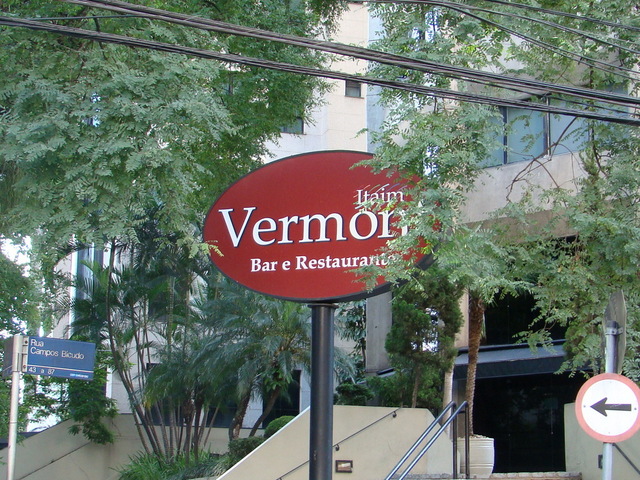
Photo by M.O.S.
Vermont Itaim (Rua Pedroso Alvarenga, 1192) This bar/restaurant/club is known for its older female crowd. If you’re looking for a relaxed night out, but still want to meet women, this is the place to go. Just keep in mind that you should dress nice because Vermont is classy and refined.
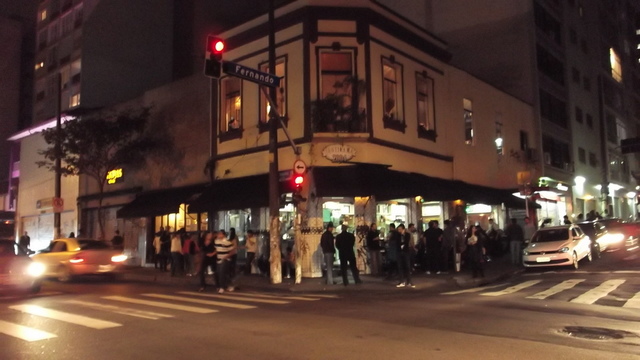
Photo by M.O.S.
Ibotirama (Rua Augusta, 1236) This is the most traditional meet up place at Rua Augusta. It’s certainly the first place you start going as a young lesbian discovering the gay places of the city, and it will continue being your go-to place when you grow old and don’t know where to go. Ibotirama recently bought the neighboring house and expanded, so you’ll find two very distinct spaces – the older and grittier original part and the newly renovated area.
Clube Flamingo (Rua Antonio Carlos, 395) This bar pays tribute to one of the first venues where the Rolling Stones played, Flamingo Club. It’s in a regular house so you’ll get a very intimate vibe, but if you climb all the stairs you’ll find a nice outdoors area on the roof. It is elegantly decorated with plants, flamingos (of course) and minimalist furniture and packed with a more upscale crowd.
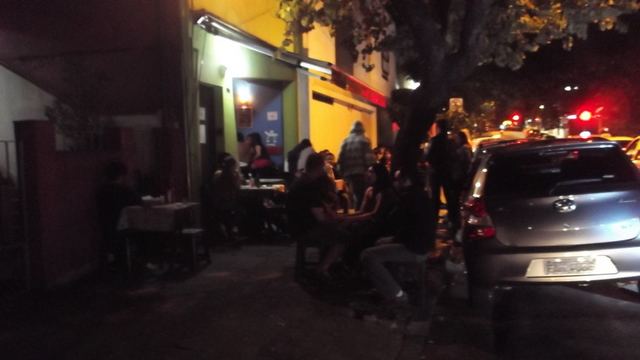
Photo by M.O.S.
Espeto de Bambu (Rua Haddock Lobo, 71) Often called simply “Bambu,” this bar is known for being almost strictly attended by women. The food is simple (a variety of grilled food on sticks) but the beer is reasonably priced and you’ll often be treated to live music.
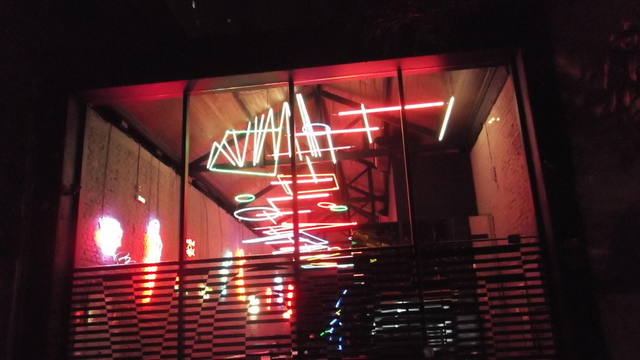
Photo by M.O.S.
Bar Volt (Rua Haddock Lobo, 40) The décor at Volt is simply the best; it rescued the old neon signs of Rua Augusta before the mayor issued a law regarding visual pollution, so you’ll find vintage brothel signs mixed with new creations of trendy artists. The drinks are amazing (I recommend the Apple Martini) and the DJs give it a nightclub vibe.
Vida De Estudante: College Life
In Brazil, it’s not very common for students to move out of their parents’ home when they start college or university it happens, but it’s not the norm. For this reason (I suppose), school spirit is somewhat limited to sports and there isn’t a large variety of student organizations. There are, however, large LGBT student groups in the main schools of São Paulo. They usually communicate on Facebook and, despite the considerable amount of political discussions online, the activities are mostly directed to social events such as parties and group outings. It’s important to note that these groups aren’t very public because some people in them are not out – that’s why it is possible (and likely) that not all students are aware of their existence. My insider tip: there is a sort of “centralized” LGBT student group that brings together the 10 most renowned colleges and universities of São Paulo which is a great idea if you’re in town lost and alone. You have to be approved by the administrators, but I happen to be very good friends with one of them so if you’re interested, message me or email diaryofalteen [at] gmail [dot] com.
Esportes: Sports
I don’t even have to say how popular football (soccer) is in Brazil. If you’re a football fan and want to sound like an expert when you visit São Paulo, there are a few main teams you must know about: São Paulo (usually associated with the upper class fans), Corinthians (has the largest and most passionate organized fan base) and Palmeiras (Corinthians’ rival and has a very large Italian fan base).
Other sports: Brazilians can be considered very active people in comparison with other countries (it’s a generalization and I currently don’t include myself in it, but oh well). Not so long ago, gyms used to be the number one choice, but nowadays it’s cool to be different so you’ll find women practicing muay-thai, boxing, pilates, skateboarding, yoga and more. Jogging is very popular as well and I recommend Parque Ibirapuera (the largest and in my opinion the most beautiful park in the city) or Parque Villa-Lobos (if you’re into bikes and skating you’ll prefer this one for its paved areas).
Of course I must finish this section off by mentioning our city’s Roller Derby team, Ladies of Hell Town. If you’re interested, they hold open practices on Fridays from 8:30pm – 10:30pm and Sundays from 10am – 12pm. Of note: they were recently featured in a music video.
www.youtube.com/watch?v=RffQLinhNfI
Restaurantes: Restaurants
Sao Paulo is known worldwide for its gastronomic quality and variety. The restaurants listed here were chosen for being gay-friendly, so keep in mind that they aren’t necessarily the most acclaimed in terms of food. One general advice I give vegetarian visitors who plan to eat out is to always re-check if there isn’t any meat in your dish, especially ham. I don’t know why, but I’ve had many unfortunate incidents with dishes wrongly marked as vegetarian because for some reason, many people think ham is not meat. Go figure.
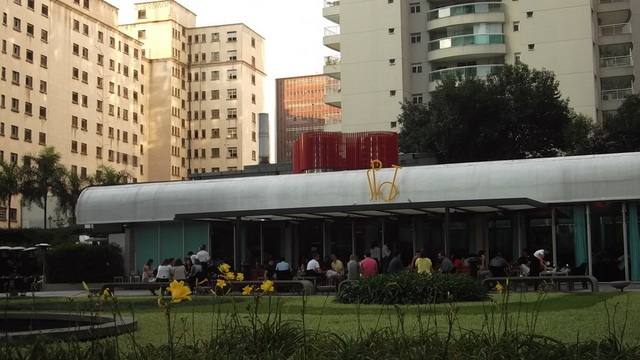
Photo by M.O.S.
Spot (Alameda Ministro Rocha Azevedo, 72)
Hours: Monday-Friday: 12pm-3pm and 8pm-1am / Sat, Sun and holidays: 12pm-5pm and 8pm-1am
This is the “top of mind” gay-friendly restaurant in São Paulo; the (pricy) food and drinks are great, but the customers are even better. This is the perfect place to have a nice meal with friends or a romantic dinner with a date, but mostly to see and be seen. Inside, the tables are a bit close together, but still nice. Outside, there is a beautiful area with intimately-arranged ottomans and gas heaters for colder nights. I recommend the Persian Lime caipirinha and any of the several pastas on their menu.
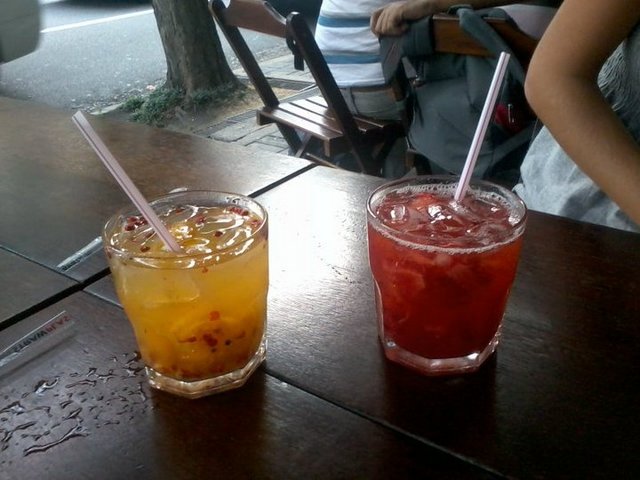
Photo by M.O.S.
Athenas (Rua Augusta, 1449)
Hours: Monday-Sunday: 7am-2:30 am
I might be biased because this is my regular go-to restaurant/bar, but it’s undeniable that Athenas has the perfect location (smack in the middle of the gayest street of São Paulo), great food, fair prices and the absolute best caipiroskas (FYI: the traditional brazilian drink is the caipirinha, made with fruit and cachaça; the caipiroska is made with vodka instead). Get there early because there is fierce competition for the outdoors tables. I usually have a bottle of white wine and the trout filet, but there are many vegetarian options too, so check the menu for the “V leaf.”
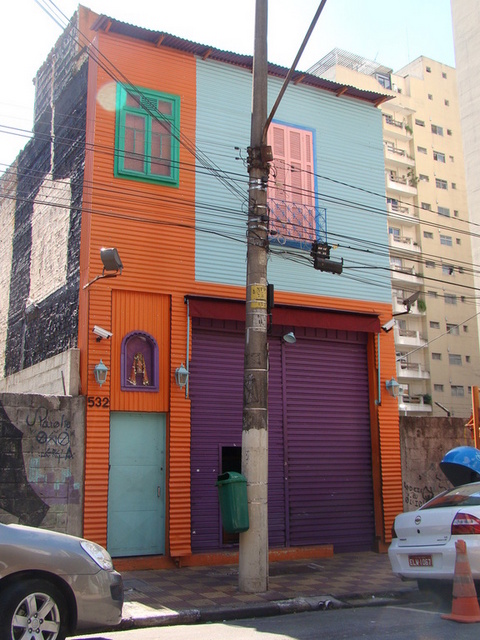
Photo by M.O.S.
Exquisito! (Rua Bela Cintra, 532)
Hours: Tuesday-Thursday: 6pm-2am / Friday-Saturday: 6pm-3am / Sunday: 6pm-1am
Although it calls itself a bar, I have to list it as a restaurant because of the impeccable and tasty menu. The décor is wonderfully colorful and fuses latin traits with our dear Brazilian culture; you’ll find funny phrases on the walls and a cozy outdoors area in the back. I recommend the “pastel,” a Brazilian pastry made out of fried dough with a variety of fillings (meat, cheese or leek). Pair it with the Uruguayan beer, Norteña, or a traditional Brazilian caipirinha.
Starbucks (Alameda Santos, 1054)
Hours: Monday-Sunday: 6:30am-12am (roughly)
Yes, we have Starbucks! Keep in mind that not every Starbucks in São Paulo would make my Queer Girl City Guide list, but this one in specific does have quite a reputation for having a mostly LGBT public. You’ll find many people working or using their laptops (it’s safe to use yours here) and the overall vibe is casual and chilled out, even though people tend to dress nice in this neighborhood, generally speaking. If it’s a sunny day, try getting one of the outdoors tables (by the end of this guide I will have said this about 37 times). Since you’re in Brazil, you’ll probably want to try one of the traditional products Starbucks added to their menu when opening here. I recommend the Pão de Queijo, a typical Brazilian pastry.
Ativismo: Activism
Marcha Mundial das Mulheres – This is actually the worldwide women’s march founded in 2000, but I’m proud to say Brazil has its representative. This group organizes several actions, among which was a march for the feminist cause that lasted 10 days.
Marcha das Vadias SP – This group is also present in other countries and stands for the rights of women in general. The group’s main cause is repelling the idea that women are somehow responsible for the violence they may suffer depending on their outfit or behavior (slut shaming, among others).
Familia: Family
Mães Pela Igualdade – This is a group of mothers united against homophobia; they defend diversity in sexual orientation, gender, and family structure.
Beleza e Visual: Beauty and Looks
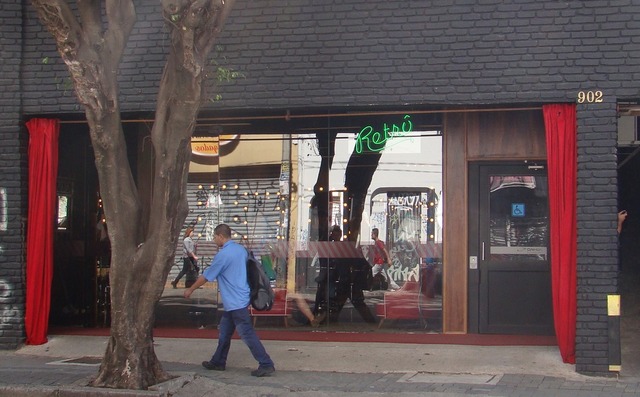
Photo by M.O.S.
Retro Hair (Rua Augusta, 902)
Hours: Tuesday-Friday: 12pm-11 pm / Saturday: 10am-8pm
Even if you’re not looking for a makeover, you should definitely visit this place. It calls itself a “conceptual salon,” with vintage 50’s/60’s decoration and background music chosen by the finest DJs of this city’s nightlife. It’s also the first salon to offer alcoholic beverages while you’re getting your hair done, so you’ll feel like you’re already at a party.
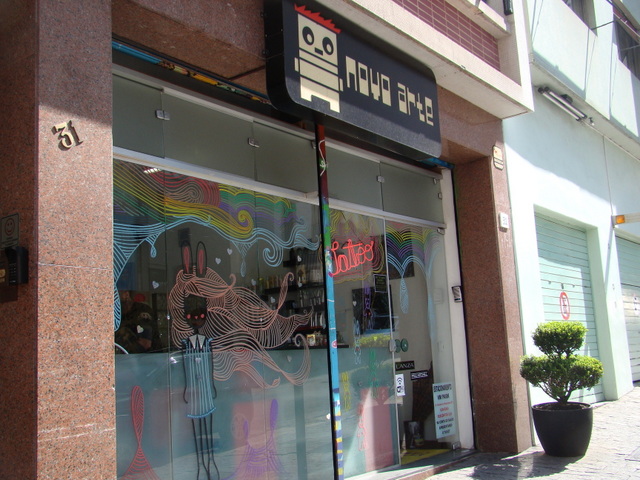
Photo by M.O.S.
Novo Arte (Rua Fernando de Albuquerque, 31)
Hours: Monday: 12pm-8pm / Tuesday: 10am-10pm / Saturday: 10am-10pm
Check out their website and see for yourself: this place proposes infusing innovation and love of art into every service offered (tattoos, haircuts, Brazilian waxes, eyebrow styling and more). It is conveniently located right next to one of the most crowded queer hotspots, Ibortirama Bar.
Led’s (Avenida Ibirapuera, 3478)
Hours: Monday-Friday: 10am-8pm / Saturday: 10am-6pm
Even though it’s not exactly a queer location, Led’s is the most traditional tattoo studio in Sao Paulo. One of the artists was on the cover of the Brazilian version of Maxim Magazine – coincidentally (or not) she’s the one that did my tattoo, ha. I can say based on my experience that, despite the brutal prices, it’s the best studio in the city.
Livros: Books
Editora Malagueta – A lesbian publisher that specializes on books written by and to minorities.
Artes: Arts
MIS (Avenida Europa, 158)
Hours: Tuesday-Friday: 12pm-10pm / Saturday, Sunday and holidays: 11am-9pm
Besides holding regular exhibits of film, photography, art and music, MIS also holds several parties usually attended by hipsters and fashionistas (and consequently, a partially gay crowd). I particularly recommend Green Sunset, check out the museum’s website for more details.
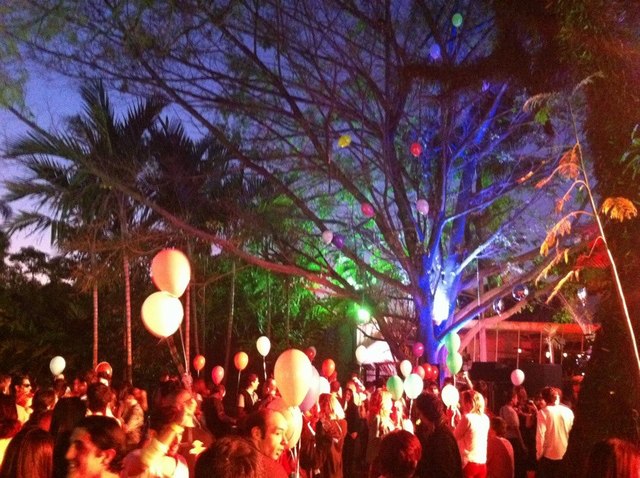
Beco do Batman (Rua Goncalo Afonso, but the easier entrance is through Rua Harmonia)
AKA Batman’s Alley. There is no website or visiting hours because it’s exactly what its name says: an alley. It started in the 80’s with a graffitti painting of Batman and for some reason, hundreds of art students and graffitti artists started leaving their artworks on this alley’s walls ever since. Go during the day because the lighting is very dim at night (and I think it’s not very safe after dark either) and TAKE A CAMERA.
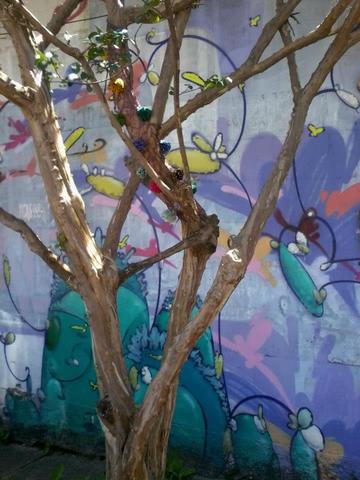
Photo by M.O.S.
Eventos: Events
Ladyfestinha – Miniature brazilian version of the original Ladyfest. This event usually includes readings, debates, artistic performances and feminist bands.
Caminhada Lesbica – This is a sort of miniature Pride Parade strictly for lesbians. It takes place one day before the actual Pride and is initially less of a party and more of a political manifestation; at the end of the parade, there usually is a large float with music. It can be tricky to find information about it online; this event is only cited on unofficial feminist blogs.

Photo by M.O.S.
Parada Gay: Pride
Sao Paulo Pride was elected the biggest in the world by the Guiness Book of World Records in 2006, so prepare yourself adequately! It is somewhat similar to Prides around the world – you’ll see lots of colors, costumes and protest signs as usual – but also expect huge and elaborate floats, very loud music, and a MASSIVE crowd – we counted 4 million people in 2011. Although the city hall usually invests around R$1 million (US$600,000 roughly) on Pride yearly, security is still far from ideal, so don’t take valuables and be careful while using your phone/camera. I reccommend taking cash, because you’ll find several street vendors that don’t accept other forms of payment; besides souvenirs, they sell water, beer and catuaba (a very cheap and, in my opinion, disgusting alcoholic beverage). Feel free to dress up or at least wear a crazy accessory of some sort (hat, glasses, etc.) and don’t miss the street party down at Rua Peixoto Gomide (intersects Rua Augusta and Frei Caneca), because that’s where everybody goes after the parade.
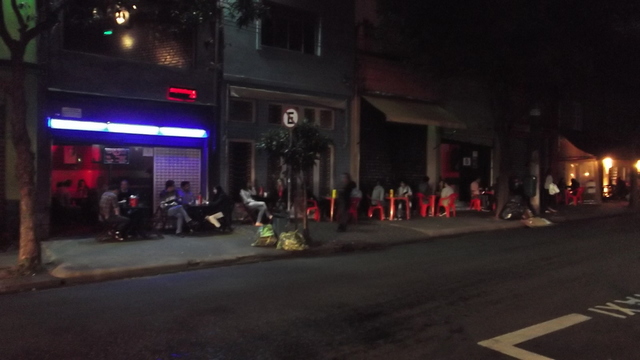
Photo by M.O.S.
Diversidade: Diversity
Although the places I recommended are all gay-friendly, keep in mind that the Brazilian population in general is not entirely open minded. For some reason beyond me, it’s okay for a straight couple to heavily make out in public, but if you’re gay and you’re just holding hands, you may receive dirty looks or nasty comments. I avoid going to straight clubs and bars when I’m with my girlfriend because straight men can be very aggressive. Unfortunately this sort of reaction still happens and I apologize in advance in the behalf of my city. However, if you’re hanging out in the neighborhoods or places I mention above, you don’t have to worry.
Segurança: Safety
You must have figured after having read several security warnings in the topics above that São Paulo is not very safe. Although my city is far from being in a security crisis (especially the places I recommended) you do have to be at least a little careful. Imagine you’re in New York alone and you’re not used to a big city – that’s how you need to behave here. Be smart and alert and that’s more than enough.
Custo De Vida: Cost of Living
Sao Paulo is the 12th most expensive city to live in in the world, so save up before coming here. I roughly converted the basic items you’d need to think about just so you have an idea:
Average apartment rent: US$500 (water, energy and internet not included)
Average meal: US$18 (no drinks included)
Average hotel rate: US$90 (per night)
Bus / Subway: US$1,50 per trip
Taxi: US$5 per kilometer by day, US$6.50 by night.




